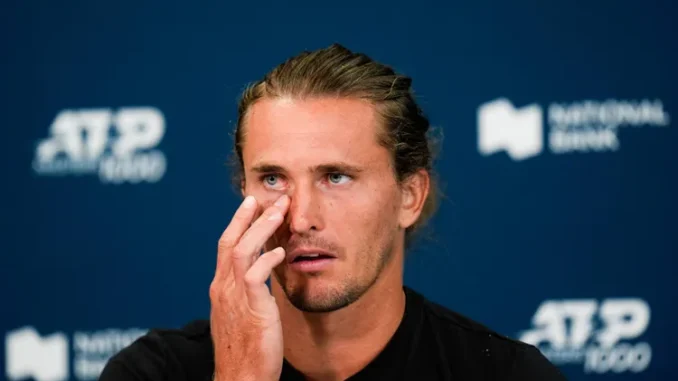
At the 2025 Cincinnati Open, Alexander Zverev, the world No. 3 and 2021 champion, kicked off his campaign with a commanding 6-3, 6-3 victory over American wildcard Nishesh Basavareddy on August 11. Yet, despite the straight-sets win, the German star found himself grappling with an unexpected adversary: the dramatically slowed courts at the newly renovated Lindner Family Tennis Center in Mason, Ohio. In a candid press conference, Zverev didn’t hold back, expressing his frustration with the tournament’s surface. “Cincinnati was a very fast tournament in the past, but it’s become extremely slow now,” he said. “I’m not sure what the reason behind this choice is, especially since in New York the courts will be very fast again. I’m not a huge fan of this surface. I just hope to play good tennis and get as far as possible.” His remarks have sparked a broader conversation about the impact of court conditions on player performance, particularly as the US Open looms on the horizon.
The Cincinnati Open, a key ATP Masters 1000 event, unveiled a $260 million transformation in 2025, introducing 13 new courts and lush green spaces to enhance the fan experience. However, the slower hard courts have drawn criticism from players like Zverev, whose aggressive, serve-driven game thrives on faster surfaces. Known for his powerful serve—averaging 10.6 aces per match in 2025—and relentless backhand, Zverev relies on quick points to dominate. The sluggish courts disrupted his rhythm against Basavareddy, a 20-year-old Stanford sophomore making his Masters debut. “The first set and a half I had no idea what I was doing,” Zverev admitted, reflecting on the adjustment required in the humid, 91-degree Cincinnati heat. His request for a night match, granted to help him acclimate after Toronto’s cooler conditions, underscored his struggle to adapt.
Zverev’s 2025 season has been a tale of near misses and resilience. A finalist at the Australian Open, where he fell to Jannik Sinner in straight sets, he also claimed a title in Munich but suffered an upset loss to Alexandre Muller in Hamburg’s second round. His semifinal run in Toronto, ended by Karen Khachanov despite holding match points, showed flashes of boldness inspired by training with Toni Nadal in Manacor. “I want to be remembered for what I’ve achieved on the court,” Zverev said, referencing his evolution as a player and father since 2021. His Cincinnati win over Basavareddy, a rising American talent ranked No. 148, was a step forward, but the slow courts posed a tactical puzzle. Zverev’s 81% first-serve point win rate and 30 unforced errors compared to Basavareddy’s 39 highlighted his ability to navigate the conditions, even if imperfectly.
The German’s next challenge is Brandon Nakashima, a 24-year-old American ranked No. 27, in the third round on August 12. Zverev holds a perfect 4-0 head-to-head record, including a 7-5, 6-4 win in Stuttgart in June 2025 and a four-set victory at the 2024 US Open. Nakashima, coming off a 4-6, 6-3, 7-6(5) win over Alexander Blockx, brings quick reflexes and an aggressive style that could test Zverev on the slow courts. “I just hope to play good tennis and get as far as possible,” Zverev reiterated, emphasizing his focus on results despite his surface concerns. His 13-8 Cincinnati record, bolstered by his 2021 title over Andrey Rublev in a swift 59-minute final, makes him a favorite, but the surface shift could level the playing field.
Zverev’s critique echoes a broader sentiment among players adjusting to Cincinnati’s new dynamics. The slower courts, a stark contrast to the lightning-fast US Open surfaces, demand longer rallies and greater patience—qualities that challenge Zverev’s “old-school” heavy racket style, which he says aids control on faster courts. “I’m playing [with] quite a heavy tennis racket still,” he noted in 2024, contrasting his approach with younger players’ lighter, faster-swinging rackets. His training with Toni Nadal aimed to instill a braver, more aggressive mindset, evident in Toronto where he volleyed over 20 times against Khachanov. Yet, double faults in critical moments, like his Toronto loss, highlight the fine line he treads on slower surfaces.
As Zverev eyes a deep run in Cincinnati—his third consecutive semifinal appearance is within reach—his comments reflect a player navigating a pivotal moment. With 40 wins in 55 matches this year and a 69% career hard-court win rate, he remains a US Open contender. However, the Cincinnati courts test his adaptability, especially after a season marked by a French Open semifinal loss to Carlos Alcaraz and off-court scrutiny over past controversies. Fans on social media have rallied behind his candor, with one post calling the surface change “a bizarre choice before the US Open.” As Zverev battles Nakashima and the slow courts, his ability to channel frustration into focus will determine whether he can reclaim Cincinnati glory and build momentum for New York.
Leave a Reply